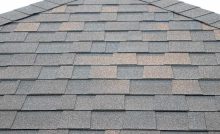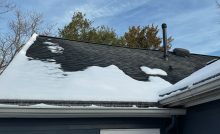Everything You Need to Know About Roof Fire Ratings
Fire resistance is a building code and insurance requirement that all roofs must meet. In today’s post, local roofing and window replacement company V. Nanfito Roofing & Siding, Inc. shares an overview of roof fire ratings.

How Are Roofs Rated for Fire Resistance?
Roofing manufacturers submit samples of their products to testing laboratories like UL Inc. and FM Global for fire rating and certification. These samples are subjected to test conditions as defined in ASTM E108, a set of standards for determining a product’s fire resistance. Among these tests are:
- Exposure to open flame. A narrow flame spread means a better fire rating.
- Pressing a burning brand on the roof surface to simulate embers from a neighboring fire.
- Direct exposure to gas flame. The roofing product is exposed to multiple cycles until it ignites.
The data from these tests are then utilized to determine each roofing product’s fire ratings.
Fire Ratings
The following are the standard roof fire classifications.
Class A roofs provide the best level of fire protection. To receive this classification, a roofing product has to:
- Have a maximum of six feet flame spread after exposure to open flame.
- Ignite between two and four hours after being in contact with a 4.4-pound, 12-by-12 inch burning brand.
- Resist at least 15 cycles of exposure to gas flame.
Slate, tile, and metal roofs typically receive this rating because of their natural fire resistance and should be your roofing of choice if your exterior has flammable components like vinyl replacement windows. Some specially designed asphalt shingle products may also have this classification.
Class B roofs provide moderate protection. To receive this classification, the product has to:
- Allow up to eight feet of flame spread.
- Ignite after one hour of contact with a 1.1-pound, six-by-six-inch burning brand.
- Resist at least 8 cycles of exposure to a gas flame.
Most asphalt shingle products receive this rating, which is a good option for most residential locations unless local fire codes say otherwise.
Class C roofs provide minimum fire protection. Products that receive this classification have:
- Allowed up to 13 feet of flame to spread.
- Ignited after 20 minutes of contact with a 0.009-ounce, 1.5-by-1.5-inch burning brand.
- Resisted three cycles of exposure to a gas flame.
Wood shakes and shingles, including those made of plywood and OSB, generally receive this rating. Any kind of roofing material that does not pass Class C standards are considered unrated, therefore unsuitable for use in occupied buildings.
V. Nanfito Roofing & Siding, Inc. is one of the leading roofing and window companies serving the entire state of Connecticut. Give us a call at (203) 639-1634. You can also fill out our contact form to schedule an appointment.
Recent Posts
Most Damaging Debris for Roofs
When it comes to maintaining the integrity of your home in Meriden, CT, the condition…
Can a Window Replacement Make You Happier?
Window replacement is more than just a home improvement project. It's an opportunity to enhance…
How to Prevent Premature Gutter Failure
Gutters play an essential role in directing rainwater away from your home. They can fail…
What Is a House Wrap?
If you want to protect your home from moisture and wind damage while improving energy…
Why Are Some Roofs Less Prone to Wind Damage Than Others?
Homeowners often wonder why some roofing systems endure severe windstorms better than others. The key factors are…
How Do You Address Mold Growth on Windows?
Mold growth on windows is not just an unsightly inconvenience. It can also be harmful…






